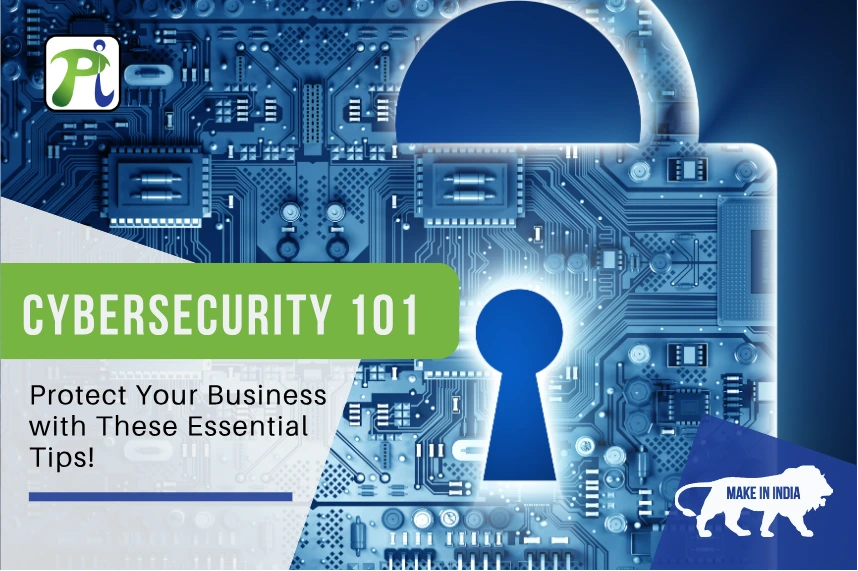We Will Get Back To You As Soon As Possible


As we navigate the intricate pathways of the digital era, the role of cybersecurity extends beyond mere protection; it stands guarding the sanctity of data and fortifying against the relentless onslaught of cyber threats.
In the intricate battle between innovation and malevolence, the cyber threat landscape has proliferated into a dynamic arena where adversaries continuously adapt and refine their tactics. From insidious malware to sophisticated phishing attacks, the arsenal of cyber threats has become increasingly potent and diverse. Organizations, irrespective of their size or industry, find themselves ensnared in a perpetual game of cat and mouse with cybercriminals.
The costs associated with cybercrime worldwide are substantial and continue to rise. Estimating the exact financial impact is complex due to various factors, including the types of cyberattacks, differing reporting methods, and evolving threats. However, numerous reports and studies provide insights into the magnitude of these losses.
predicted that global cybercrime costs would reach $6 trillion annually by 2021, up from $3 trillion in 2015. This figure encompasses damages and costs related to data breaches, cyber theft, ransomware, and other forms of cybercrime.
found that the average annual cost of cybercrime for organizations worldwide increased by over 27% from 2019 to 2020, reaching $13 million per company.
the United States highlighted that in 2020, the reported losses from cybercrime exceeded $4.2 billion, with ransomware attacks being a significant contributor.
stated that cybercrime continues to rise and evolve, with ransomware attacks becoming more prevalent and sophisticated. This report highlighted the impact on various sectors, including healthcare, finance, and critical infrastructure.
identified cyberattacks as one of the top global risks in terms of likelihood and impact. The economic losses and potential disruptions from cyber incidents across various sectors are a significant concern for businesses and governments worldwide.
These figures underscore the immense financial impact of cybercrime on businesses globally. The costs are not only monetary but also include reputational damage, loss of customer trust, and potential legal and regulatory consequences.
In the digital ecosystem, data emerges as the lifeblood of enterprises, and its compromise poses an existential threat. Cybersecurity is the vanguard that shields sensitive information from falling into the wrong hands. Be it intellectual property, customer data, or proprietary algorithms, the stakes are exceptionally high. A breach not only jeopardizes data integrity but also undermines customer trust and inflicts irreparable damage to the brand.
It safeguards sensitive data, such as personal information, financial records, intellectual property, and government data, from unauthorized access and theft.
Cyber-attacks can lead to financial losses for individuals, businesses, and governments through theft, fraud, or extortion. Cybersecurity measures help mitigate these risks.
A breach can damage an organization's reputation and erode trust among customers, partners, and stakeholders. Strong cybersecurity practices help to maintain trust and credibility.
Cyber-attacks, such as ransomware or DDoS (Distributed Denial of Service), can disrupt normal operations, causing downtime and significant financial losses.
Essential services like electricity, transportation, healthcare, and communication systems rely on digital infrastructure. Cybersecurity ensures their protection from potential attacks that could have catastrophic consequences.
Many industries have regulations and compliance standards that require organizations to implement cybersecurity measures to protect sensitive information and adhere to legal requirements.
As technology advances, new threats emerge. Cybersecurity helps organizations stay ahead of evolving threats by implementing proactive measures and staying updated on the latest security protocols.
As organizations increasingly migrate to cloud-based infrastructures, the paradigm of cybersecurity undergoes a profound transformation. The traditional castle-and-moat approach gives way to more nuanced strategies, where securing data becomes a collaborative effort between organizations and their cloud service providers. Encryption, multi-factor authentication, and robust access controls, among others, emerge as the linchpins of defense in this dynamic environment.
Securing networks from unauthorized access and intrusions through firewalls, encryption, and other mechanisms.
Protecting data from unauthorized access, modification, or destruction, often through encryption, access controls, and data backup measures.
Ensuring that software and applications are free from vulnerabilities that could be exploited by hackers.
Securing individual devices (computers, mobile devices) and controlling access to them to prevent breaches.
Protecting data stored on cloud platforms and ensuring the security of cloud-based services.

Having protocols in place to respond to and recover from cybersecurity incidents or breaches swiftly.
Managing and controlling access to systems and data based on user roles and permissions.
The relentless pace of technological innovation introduces both opportunities and challenges for cybersecurity. As we embrace emerging technologies like artificial intelligence and the Internet of Things, the attack surface expands, necessitating a recalibration of defense mechanisms. Cybersecurity, therefore, becomes an integral part of the innovation agenda, ensuring that advancements are not compromised by unforeseen vulnerabilities.
The business landscape has shifted from viewing cybersecurity as a mere IT concern to recognizing it as a strategic imperative. Organizations are cognizant that a proactive cybersecurity stance is not just a regulatory checkbox but a linchpin in preserving operational continuity. Investments in cybersecurity services underscore the commitment to building robust cybersecurity postures.
These services encompass a wide range of offerings tailored to protect against various threats and vulnerabilities.
Identifying weaknesses in systems, networks, or applications through simulated attacks to proactively address potential security gaps.
Outsourcing security monitoring, threat detection, incident response, and management of security technologies to specialized providers.
Services to respond to security incidents, mitigate the impact, investigate breaches, and identify the root causes to prevent future occurrences.
Offering expertise and guidance on cybersecurity strategy, risk assessment, compliance, and regulatory requirements tailored to specific industries or organizations.
Services that manage user identities, permissions, and access controls to ensure only authorized individuals have appropriate access to systems and data.
Protecting data and applications hosted in cloud environments by implementing security measures specific to cloud-based technologies.
Securing individual devices (computers, mobile devices) and managing their security configurations, antivirus software, firewalls, and intrusion prevention systems.
Educating employees about cybersecurity best practices, phishing awareness, and safe online behaviors to reduce the human factor in security breaches.
Providing information about emerging threats, vulnerabilities, and attack patterns to help organizations anticipate and defend against potential cyber-attacks.
Assisting organizations in aligning with regulatory standards and managing cybersecurity risks effectively within their specific industry or geographical regulations.
Implementing encryption methods to protect sensitive data both at rest and in transit to prevent unauthorized access.
These services can be offered by specialized cybersecurity firms, managed security service providers (MSSPs), consultants, or in-house cybersecurity teams. Tailoring these services to the specific needs and risk profile of an organization is crucial for effective cybersecurity defense.
critical factor. Social engineering attacks prey on human vulnerabilities, emphasizing the need for comprehensive training programs to instill a culture of cybersecurity awareness. Employees, from the C-suite to front-line staff, play pivotal roles in fortifying the organization's cyber defenses.
In an era marked by an increasing regulatory focus on data protection and privacy, compliance frameworks serve as both a benchmark and a catalyst for robust cybersecurity practices. Organizations, especially those dealing with sensitive data, find themselves navigating a complex web of regulations. Adherence to these frameworks not only ensures legal compliance but also enhances the overall security posture.
As we stand at the crossroads of technological innovation and cyber threats, the way forward demands a holistic and proactive approach to cybersecurity. It transcends the boundaries of IT departments, becoming a shared responsibility across the organization. Collaboration with cybersecurity experts, threat intelligence sharing, and continuous education form the foundation of a resilient cybersecurity strategy.
In the digital age, where the pulse of business beats in the binary code, cybersecurity appears as the guardian standing vigilant against unseen adversaries. Its importance is not confined to the turf of technology; it reverberates through boardrooms, regulatory landscapes, and the trust of stakeholders. A comprehensive and proactive cybersecurity strategy is not merely a shield; it is the core upon which the digital frontier is safeguarded, ensuring that the promise of the digital era is realized without compromise.
Questions? We're here to help.
©2025 Pi DATACENTERS® Pvt. Ltd. All rights reserved
